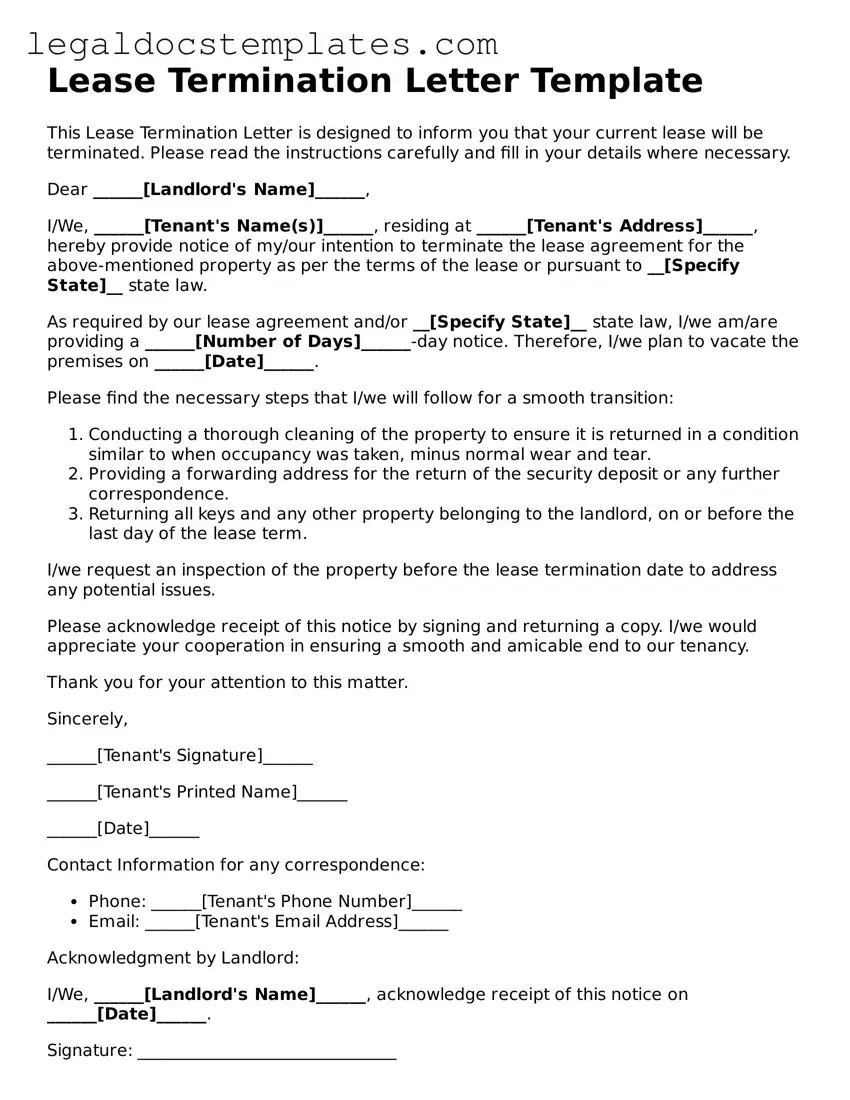Lease Termination Letter Template
This Lease Termination Letter is designed to inform you that your current lease will be terminated. Please read the instructions carefully and fill in your details where necessary.
Dear ______[Landlord's Name]______,
I/We, ______[Tenant's Name(s)]______, residing at ______[Tenant's Address]______, hereby provide notice of my/our intention to terminate the lease agreement for the above-mentioned property as per the terms of the lease or pursuant to __[Specify State]__ state law.
As required by our lease agreement and/or __[Specify State]__ state law, I/we am/are providing a ______[Number of Days]______-day notice. Therefore, I/we plan to vacate the premises on ______[Date]______.
Please find the necessary steps that I/we will follow for a smooth transition:
- Conducting a thorough cleaning of the property to ensure it is returned in a condition similar to when occupancy was taken, minus normal wear and tear.
- Providing a forwarding address for the return of the security deposit or any further correspondence.
- Returning all keys and any other property belonging to the landlord, on or before the last day of the lease term.
I/we request an inspection of the property before the lease termination date to address any potential issues.
Please acknowledge receipt of this notice by signing and returning a copy. I/we would appreciate your cooperation in ensuring a smooth and amicable end to our tenancy.
Thank you for your attention to this matter.
Sincerely,
______[Tenant's Signature]______
______[Tenant's Printed Name]______
______[Date]______
Contact Information for any correspondence:
- Phone: ______[Tenant's Phone Number]______
- Email: ______[Tenant's Email Address]______
Acknowledgment by Landlord:
I/We, ______[Landlord's Name]______, acknowledge receipt of this notice on ______[Date]______.
Signature: _______________________________
Date: ____________________________________
